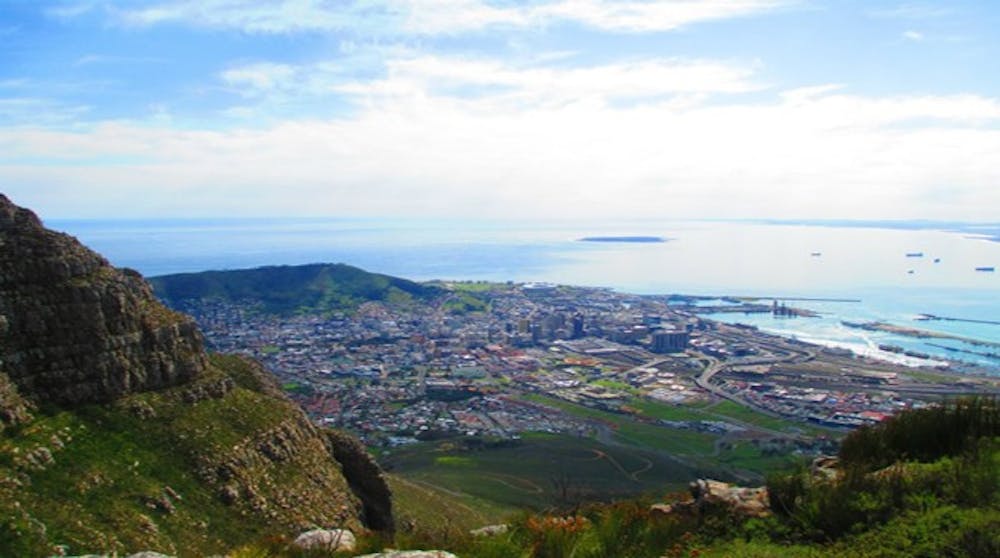What is South African culture like? I heard this question countless times upon my return to the U.S. after my study abroad experience in Cape Town. Unfortunately, I could never provide the inquirers with a straightforward answer, but this was the unique beauty of the place I called home last fall.
Many foreigners tend to have a homogenized view of the African continent, perhaps instilled by my generation's chagrined high school English novel, "Heart of Darkness."
My friends and family were surprised to hear that South Africa is quite westernized technologically, boasts one of the most progressive constitutions in the world and is home to an incredibly diverse mix of ethnicities. Despite many first-world aspects of life, the country still struggles with third-world infrastructural inequalities following the apartheid regime.
Similar to the United States, South Africa is a melting pot of cultural and ethnic diversity. Located at the crossroads of the Dutch East Indian Trading Company's old sailing route and the confluence of the Atlantic and Indian oceans, the country teems with a palpable pulse of hundreds of cultural influences from all over the globe.
Cape Town, at the southwestern tip of the country and continent, served as a provisional stop for the Dutch starting in 1652, and since then there has been a long, tumultuous history of various cultures clashing and assimilating in the Cape.
An amalgamation of indigenous Khoisan and San people, European settlers, emancipated slaves from Java, Madagascar, Sri Lanka and India and various immigrants from all over Africa have combined over the past three-and-a-half centuries to morph into a culture that is uniquely South African. Archbishop Desmond Tutu coined the phrase "Rainbow Nation" to describe post-apartheid South Africa, and the country recognizes 11 official languages today.
Despite the vibrant culture and relatively stable government that exists today, the history of South Africa cannot be discussed without recognizing the legacy of the brutal apartheid regime that held power from 1948 -1994.
The regime's strategic, institutional segregation displaced hundreds of thousands of citizens from their homes and divided the population based on race. Many of the displaced communities still live in poor conditions without access to basic amenities, and monumental income gaps between the richest and poorest citizens are still prevalent.
Apartheid law divided the population into the general categories of White, Black (African descent), Coloured (mixed race) and Indian. Surprisingly, these terms are still used today. However, they are not considered derogatory and simply refer to one's ethnicity.
The multiculturalism is most apparent when traveling through the neighborhoods of Cape Town. The city is also not hard on the eyes.
The city center, aptly named the "City Bowl," rests in a natural bowl between three mountains. Table Mountain provides perhaps one of the most dramatic backdrops of all major cities in the world. Cape Town's sprawling suburbs all have distinct character and geography.
The Cape Flats, a massive low-lying area southeast of the city, has been described as the "apartheid's dumping ground" and is home to much of Greater Cape Town's population. Many people classified as Black or Coloured were relocated to informal settlements in the Flats during apartheid.
Enjoy what you're reading?
Signup for our newsletter
These "townships" are sprawling, densely populated settlements with troublesome history and vibrant culture. The few times I visited the Flats for volunteer work or the famous Sunday braais (BBQs), I noticed the passionate perspectives of these oppressed people.
Bo-Kaap, a largely Muslim community within the City Bowl, is a picturesque cobblestoned neighborhood with multi-colored houses that still maintains strong Islamic traditions and has a rich cultural history. The area is home to many descendants of immigrants from Southeast Asia, now known as the Cape Malay ethnic group.
In contrast to the Flats and Bo-Kaap are the Afrikaner-dominated areas of Stellenbosch, which is home to hundreds of beautiful wineries, and Camps Bay, an affluent beach town. Both areas have a long history of European settlers and are quite distinct from the rest of the suburbs.
South Africans of all ethnicities are some of the kindest, most passionate people I have ever met, and I would encourage anybody with the slightest interest in the country's history to visit and learn more.
This brief overview of the various ethnicities present in South Africa couldn't possibly cover the many nuances and complexities of their culture. However, I think it is crucial for any citizen in the increasingly interconnecting world to have at least a basic understanding of the processes that have created this unique culture in such a beautiful country.
Support independent student media
You can make a tax-deductible donation by clicking the button below, which takes you to our secure PayPal account. The page is set up to receive contributions in whatever amount you designate. We look forward to using the money we raise to further our mission of providing honest and accurate information to students, faculty, staff, alumni and others in the general public.
Donate Now

